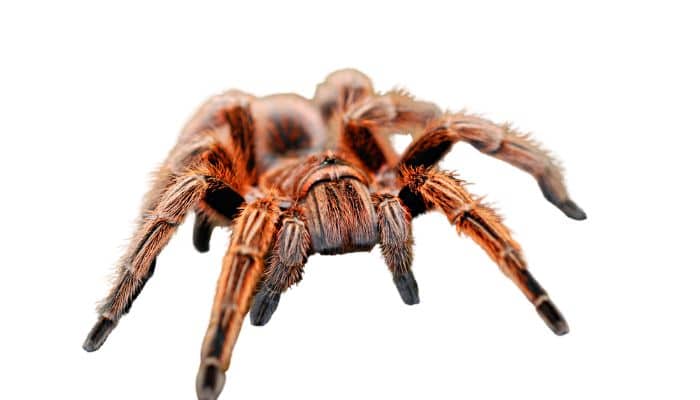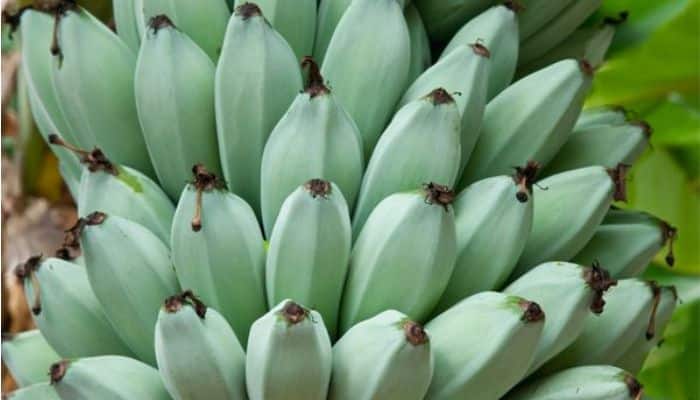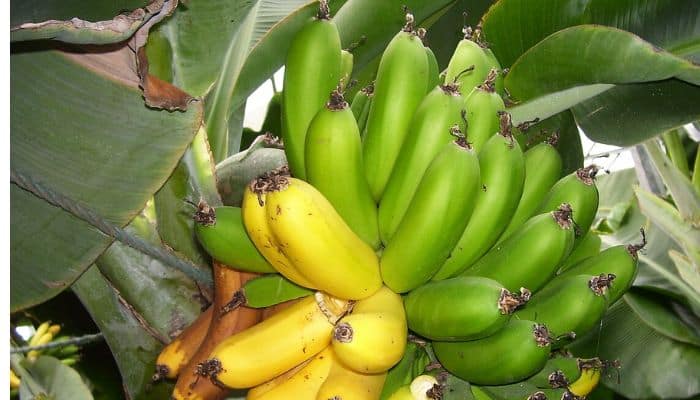Banana spider florida: here you can find details information in this regard. so follow this article+
Discovering the Banana Spider in Florida

Delving into the natural world of Florida, one might come across a peculiar creature that commands attention — the banana spider, also known as the golden silk orb-weaver. Boasting a distinctive appearance, these spiders are known for their impressive web designs and vibrant colors.
Read more

Primarily found in the warmer regions of Florida, the banana spider has been a topic of fascination for arachnologists and nature enthusiasts alike. It’s not uncommon for these spiders to be spotted in backyards, parks, and forests, often leaving observers in awe of their intriguing characteristics.
The banana spider, or Nephila clavipes, is the only species of the golden silk orb-weavers found in the Americas, extending from the southern United States to Argentina.
Their name, banana spider, comes from their elongated body shape and yellow to greenish-yellow body color which bears a striking resemblance to a ripening banana. Despite their seemingly alarming size and bright color, banana spiders are essentially harmless to humans. Their venom is potent enough to paralyze their prey but is not dangerous to humans unless one is allergic.
Identifying a Banana Spider
Identifying a banana spider involves a keen eye for detail. Here’s what to look out for:
- Size: Females, being significantly larger than males, have a body length that can reach up to 2 inches, while males rarely exceed a third of an inch.
- Color: They have a yellow or golden body with a hint of green, sometimes accompanied by white, brown, or silver on the abdomen.
- Legs: Their legs are black with yellow bands, contrasting with their body color.
- Web: They weave large, semi-permanent orb webs, usually in open woods or edges of forest paths. The silk has a unique golden sheen to it.
Despite their slightly intimidating appearance, banana spiders play a crucial role in maintaining the ecological balance. They act as natural pest control, helping to reduce the population of insects like mosquitoes and flies.
Living Alongside the Banana Spider
Living in Florida means that encounters with banana spiders are inevitable. However, these creatures are far from being a menace. They are quiet, non-aggressive, and tend to stay in their webs, catching prey. If you see a banana spider, admire it from a distance, and remember that it’s a beneficial part of Florida’s diverse ecosystem.

The Biology of the Banana Spider
In the vibrant ecosystems of Florida, the Banana Spider, scientifically known as Nephila clavipes, plays a vital role. This arachnid, known for its striking appearance and intricate web designs, possesses unique biological characteristics that make it stand out in the spider world.
Physical Characteristics
The Banana Spider is a large, brightly colored spider. Females, significantly larger than the males, can reach sizes up to 2 inches (5 cm) in body length. They are primarily gold, with hues of green and blue. Males, on the other hand, are more subdued in color and smaller, averaging around 0.7 inches (1.8 cm).
Web Construction
A signature characteristic of the Banana Spider is its remarkable web. The spider constructs intricate, large-scale, golden orb webs, which are both beautiful and deadly to prey. The golden silk they use is one of the strongest, most resilient materials in the natural world.
Diet and Feeding Habits
Feeding primarily on small invertebrates, the Banana Spider’s diet includes flies, moths, and even small birds and bats, trapped in their strong, sticky webs. Once prey is trapped, the spider rapidly moves to it, bites it to immobilize it with venom, and then wraps it in silk for later consumption.
Reproduction
The reproductive cycle of the Banana Spider is fascinating yet perilous, particularly for the males. After mating, females produce hundreds of eggs, which they encase in protective silk sacs. These sacs are then hung in the female’s web or nearby vegetation. After hatching, the spiderlings disperse by “ballooning” – riding the wind on strands of silk.
In conclusion, the Banana Spider’s fascinating biology makes it a remarkable creature. Its vibrant colors, intricate webs, and unique behaviors contribute to the rich biodiversity of Florida’s ecosystems
What You Need to Know About the Banana Spider in Florida
When it comes to the world of spiders in Florida, one species has earned a reputation for being uniquely fascinating – the Banana Spider. Known scientifically as Nephila clavipes, this spider is not only visually striking, but also has intriguing behaviors and characteristics that set it apart.
Appearance and Identification
The Banana Spider is instantly recognizable due to its distinct appearance. The females, significantly larger than the males, can reach up to 1.5 inches in body length. They boast a vibrant yellow
The Habitat and Distribution of the Banana Spider in Florida
Among the myriad creatures making up Florida’s vibrant ecosystem, the Banana Spider, scientifically known as Nephila clavipes, is particularly noteworthy. This arachnid, also commonly referred to as the Golden Silk Orb-Weaver, is a frequent sight across the Sunshine State, where it weaves intricate, golden-hued webs that are both a marvel to behold and a testament to nature’s engineering prowess.
While the Banana Spider can be found across the globe in warmer regions, Florida’s subtropical climate makes it an ideal habitat for these creatures. Here, they can be most commonly found in forests, marshes, and swamplands, where they have ample space to build their complex web structures. The Banana Spider also thrives in areas with a significant insect population, its primary source of sustenance.
Despite the Banana Spider’s wide distribution across Florida, there are certain hotspots where these spiders are particularly abundant. These include:
- The Everglades National Park: This sprawling reserve of marshland is a prime location for Banana Spiders due to its rich insect life and abundant vegetation.
- The Florida Keys: The archipelago’s tropical climate and lush greenery provide the perfect environment for these spiders to thrive.
- Northern Florida: The forests in this area, particularly near rivers and swamps, host a significant number of Banana Spiders.
Contrary to what their name might imply, Banana Spiders are not typically found on banana plants. The name refers primarily to the spider’s yellow and black markings, which resemble the coloration of a ripe banana.
Note: While Banana Spiders may look intimidating due to their large size and vibrant markings, they are generally harmless to humans. Their venom is not dangerous unless the person is allergic, and these spiders are typically non-aggressive unless provoked.
Understanding the habitat and distribution of the Banana Spider in Florida is crucial not only for nature enthusiasts and researchers but also for the everyday Florida resident or visitor. By respecting these creatures and their habitats, we contribute to the preservation of Florida’s unique and diverse ecosystem.
How to Identify the Banana Spider in Florida
the banana spider, scientifically known as Nephila clavipes, is no small feat in the diverse fauna of Florida. These arachnids, often referred to as golden silk orb-weavers, are quintessential residents of the Sunshine State’s swamps, forests, and even suburban neighborhoods. With a few key identifiers, you too can spot these spiders with ease.
Size and Body Structure
The banana spider is a robust and sizeable arachnid. Females, which are notably larger than males, can grow to be 1.5 inches in body length, not including their leg span. When you consider the leg span, some specimens can reach a size of up to 5 inches. Males, on the other hand, are significantly smaller, often only about a quarter of the size of the females.
These spiders have elongated bodies, with cylindrical abdomens that are often brightly colored in hues of yellow, orange, or brown. These vibrant colors, coupled with their substantial size, make them stand out in their environments.
Web Structure
One of the most distinguishing features of the banana spider is its web. Golden silk orb-weavers are known for their impressive, orb-shaped webs which can span up to 6 feet in diameter. These webs are golden in color and incredibly strong. In fact, the silk’s tensile strength rivals that of steel.
Behavior Patterns
Banana spiders are diurnal creatures, meaning they are most active during the day. If you’re looking to spot one, daytime is your best bet. They tend to remain in their webs, awaiting prey, and are not typically aggressive unless provoked.
Note: Always observe spiders from a safe distance, and never try to handle them. Though their bite is not lethal to humans, it can still cause discomfort and possible allergic reactions.
Location
In Florida, banana spiders can be found in a variety of habitats, from damp marshlands to drier upland forests. They are particularly common in the Everglades, but they can also be found in suburban areas, gardens, and parks.
By understanding these identifiers – size and body structure, web architecture, behavioral patterns, and common locations – you can confidently identify the banana spider in Florida. Remember, these spiders play an important role in controlling insect populations and are an integral part of Florida’s unique ecosystem.
Are Banana Spiders Dangerous? The Truth Revealed
it comes to the subject of the banana spider, often referred to as the golden silk orb-weaver, uneasiness ensues, particularly due to their formidable appearance. Nonetheless, this common misconception about the banana spider needs to be addressed. Is the banana spider truly dangerous? The answer to this question is both straightforward and complex, and reveals the fascinating duality of nature’s creatures.
First and foremost, the banana spider, native to Florida, is not generally harmful to humans. Although they are venomous, the potency of their venom is relatively low compared to other spiders. In fact, their venom is less potent than a typical bee sting. However, they shouldn’t be handled carelessly as their bite can cause some discomfort.
“The venom of the banana spider is designed primarily for small prey and is not typically harmful to humans.”
There are, however, a few caveats to this. The banana spider’s bite can cause mild to moderate reactions in some individuals, including:
- Redness and swelling: This is the most common reaction to a banana spider bite. The area around the bite may become red and swollen, but this usually subsides within a few hours to a few days.
- Itching: Some individuals may experience itching at the site of the bite. This can be relieved with over-the-counter treatments.
- Pain: The bite can cause a sharp, stinging sensation, similar to a bee sting. However, the pain usually subsides relatively quickly.
Despite these potential reactions, it’s crucial to remember that a banana spider’s bite is rarely severe and is not considered medically significant. While their large size and vibrant coloration may make them appear threatening, they are relatively harmless creatures that prefer to keep to themselves. In fact, they play a vital role in controlling the mosquito and fly populations in Florida.
In conclusion, the banana spider is not a creature to be feared but rather one to be respected and understood. Its prominent presence in Florida’s ecosystems is a testament to its resilience and adaptability, and its relative harmlessness to humans serves as a reminder of nature’s balance. So, the next time you spot a banana spider, appreciate its role in Florida’s biodiversity instead of fearing its bite.
The Venom of the Banana Spider and How It Affects Humans
golden silk orb-weaver, is a fascinating subject. While it is mildly toxic to humans, it’s not generally lethal. However, the effects can be unpleasant and prompt immediate medical attention.
The banana spider’s venom is a complex cocktail of proteins and molecules, specifically designed to immobilize its prey. In humans, the injected venom can create a series of responses – some immediate, others gradual. These effects differ from person to person, depending on individual sensitivity, the amount of venom injected, and the location of the bite.
Immediate and Short-Term Effects
- Initial pain: The initial bite is relatively painful due to the size of the spider’s fangs. It may be comparable to a bee sting.
- Redness and swelling: The area around the bite may become red and swollen within a few minutes to a few hours.
- Blistering: In some cases, blistering may occur at the site of the bite.
- Itching: Itching around the bite is a common reaction and can last for several days.
Long-Term Effects
- Discoloration: The bitten area may become discolored, often turning a blue or purple hue, due to tissue damage.
- Nausea and dizziness: Some people may experience nausea, dizziness, or even fainting, usually within the first few hours post-bite.
- Increased heart rate and blood pressure: In rare cases, the venom can cause a rise in heart rate and blood pressure.
It’s worth noting that these adverse effects are rare and typically occur in sensitive individuals or in the event of a severe reaction. Regardless, if you’re bitten by a banana spider, it’s always advisable to seek medical attention immediately.
Remember, while banana spiders are common in Florida, they are not typically aggressive and usually bite only in self-defense. By respecting their space, avoiding contact, and understanding their behavior, we can peacefully coexist with these remarkable creatures.
Interested in more about Florida’s unique wildlife? Consider diving deeper into the world of spiders and their astonishing abilities!
How to Stay Safe from the Banana Spider in Florida
The banana spider, also known as the golden silk orb-weaver, is a common sight in Florida. With its distinct golden web and large size, it’s a spider that’s hard to miss. Despite its intimidating presence, it’s important to note that banana spiders are not generally aggressive and their venom is not deadly to humans. However, their bite can cause discomfort and may require medical attention. Here are some key tips to keep you safe from encounters with the banana spider.
Understand Their Habitat
Banana spiders prefer warm, humid environments with plenty of vegetation. They can commonly be found in forests, parks, and even in backyards. Understanding where these spiders are likely to be found can help you be more vigilant and avoid accidental encounters.
Be Aware of Your Surroundings
This might seem obvious, but it’s easy to walk into a banana spider’s web if you’re not paying attention. Always be mindful of where you’re going, especially in areas where banana spiders are known to be present.
Keep Your Distance
While banana spiders are not typically aggressive, they can bite when they feel threatened. Therefore, it’s wise to keep a safe distance. If you need to remove a banana spider from your property, it’s advisable to call a professional pest control service.
Use Protective Clothing
If you’re going into areas where banana spiders are likely to be found, consider wearing long sleeves, pants, and a hat to protect yourself. Gloves are also a good idea if you’ll be handling vegetation or moving items where a spider could be hiding.
Stay Calm
If you do encounter a banana spider, don’t panic. Remember, they are not typically aggressive and will usually try to escape rather than attack. However, it’s always best to avoid handling them directly and instead call a professional.
Note: If you are bitten by a banana spider, clean the wound with soap and water and apply an ice pack to reduce swelling. If you experience severe symptoms like dizziness, rapid heartbeat, or difficulty breathing, seek immediate medical attention.
In conclusion, while the banana spider may be a daunting sight, it doesn’t pose a significant threat if treated with respect and caution. By following these safety tips, you can keep yourself and your loved ones safe from unwanted encounters with this fascinating creature of the Florida ecosystem.
Interesting Facts About the Banana Spider in Florida
When it comes to Florida’s diverse array of fauna, one creature that stands out is the banana spider. Officially known as the golden silk orb-weaver, this spider is a common yet fascinating species. This arachnid’s ecological role, behavior, and striking appearance offer a myriad of interesting facts to explore.
The Banana Spider’s Unique Characteristics
Known for its bright yellow-golden silk and distinctive coloring, the banana spider is a sight to behold. The females, larger than the males, sport a combination of silver, yellow, brown, and black hues, with a body length of 1.5 to 2 inches. The males, on the other hand, are significantly smaller with a duller color palette.
Orb-Weaver Nature
The banana spider is an active weaver. It gets its official name, the golden silk orb-weaver, from the large, intricate, and circular webs it weaves, often spanning several feet. The ‘golden’ part of the name comes from the color of the spider’s silk which has a yellow-golden hue, especially visible when the sun hits it at the right angle.
Natural Pest Controllers
These spiders play a crucial role in Florida’s ecosystem by controlling the populations of various pests. They feast on small to medium-sized insects such as flies, mosquitoes, and even the occasional small bird or bat that gets caught in their sturdy webs.
Despite their scary appearance, banana spiders are not aggressive towards humans and their venom is not harmful. However, their bites can cause mild discomfort and should be avoided.
Unique Silk Production
The banana spider’s silk is not only beautiful but also incredibly strong. In fact, the tensile strength of this silk is comparable to that of high-grade steel. This remarkable feature has led scientists to study the silk for potential uses in various industries, including textile and medical applications.
Reproduction and Life Cycle
The banana spider’s life cycle is an interesting spectacle. After mating, the female will produce one or several egg sacs, each containing hundreds of eggs. The sacs are carefully hidden in the web or nearby foliage for protection. After hatching, the spiderlings disperse by ‘ballooning’, a process where they release a thin silk thread and are carried off by the wind to new locations.
From the distinct coloring to the impressive web-weaving skills, the banana spider is undeniably a fascinating creature. Remember, these creatures are an important part of Florida’s ecosystem, so if you spot one, appreciate it from a distance and let it go about its spider business.
The Importance of the Banana Spider to the Ecosystem
The Banana Spider, scientifically known as Nephila clavipes, plays a fundamental role in Florida’s ecosystem. This arachnid, often dismissed as a mere feature of the state’s unique tropical landscape, actually serves an array of essential functions that contribute to the balance and vitality of Florida’s natural habitats.
Primarily, the Banana Spider is a pest controller par excellence. It traps and consumes a wide variety of insects, including mosquitoes and flies, that could potentially harm plants or become a nuisance for humans. They are nature’s own pest control, working diligently to maintain a balanced insect population.
Note: While Banana Spiders are venomous, they pose little threat to humans. Their venom is not harmful to humans unless one is allergic. They only bite as a last resort, preferring to retreat when they feel threatened.
In addition, their intricate webs, renowned for their strength and size, serve as traps for insects that could otherwise damage crops or spread disease. When these spiders weave their intricate, golden silken threads across trees and plants, they create a natural barrier against harmful insects.
Contributions to Biodiversity
Banana Spiders are a crucial part of Florida’s biodiversity. They provide food for a number of bird species, lizards, and other larger predators. This spider species thus acts as a vital link in the food chain, playing a role in the survival of many other species.
Their distinctive, large, golden webs also provide shelter and breeding sites for various smaller insect species. These spiders, therefore, contribute to the enhancement of local biodiversity by providing habitats and breeding grounds for other creatures.
Potential for Scientific Research
The Banana Spider’s silk is of great interest to scientists and researchers. Its remarkable strength and elasticity have inspired developments in various fields, including materials science and biomedical research. These spiders, therefore, hold potential for scientific advancements that could benefit society at large.
To sum up, the Banana Spider is an integral part of Florida’s ecosystem. Its roles are diverse and vital, ranging from controlling pests to contributing to biodiversity and inspiring scientific research. Florida would not be the same without these eight-legged architects of nature.
How to Get Rid of Banana Spiders Without Harming Them
Florida, known for its idyllic beaches, vibrant nightlife, and diverse wildlife, is also home to a unique and fascinating creature – the banana spider. Also known as the golden silk orb-weaver, this spider is not just an ordinary arachnid. With unique characteristics and an interesting background, the banana spider is a captivating species that serves as a vital part of Florida’s ecosystem.
It’s not uncommon for residents and visitors alike to come across these spiders, often nestled among banana leaves or crafting intricate webs between trees. But many people see them as just another Florida spider, perhaps a bit more colorful or larger than most. However, there’s a lot more to the banana spider than meets the eye.
In this article, we invite you to journey with us into the world of the banana spider, where we’ll delve into its biology, behavior, habitat, and its role in Florida’s biodiversity. Whether you’re a nature enthusiast, a concerned resident, or simply a curious reader, this comprehensive guide will provide you with all the information you need about the banana spider in Florida.
Encountering a Banana Spider: What to Do and What Not to Do
can be a remarkable experience, given their striking appearance and intriguing behaviors. However, it’s crucial to approach these encounters with respect and caution. Despite their intimidating size, these spiders are not typically aggressive towards humans, but they can still bite when threatened. Here’s what you should do and avoid doing when you encounter a Banana Spider.
What To Do
- Observe from a Distance: Banana spiders are not harmful unless provoked. One of the best ways to ensure you don’t pose a threat to them is by keeping a respectful distance. With their bright yellow and black coloration and intricate webs, you can appreciate their beauty from afar.
- Respect Their Space: If a Banana Spider has spun its web across a walkway or in a frequently used area, try to go around it if possible. By respecting their space, you minimize the risk of an accidental bite.
What Not To Do
- Do Not Touch: Although they are not overly aggressive, Banana Spiders will bite in self-defense. To avoid a bite, do not touch or handle the spider.
- Do Not Disturb The Web: Banana Spiders spend significant time and energy creating their intricate webs. Avoid damaging the web, as this can stress the spider and provoke it into a defensive state.
Remember, Banana Spiders play a crucial role in Florida’s ecosystem, helping control pest populations. So, while they might seem intimidating, they are generally not dangerous to humans and should be respected for their essential environmental role.
The Most Common Misconceptions About Banana Spiders
When it comes to the Banana Spider, also known as the Golden Silk Orb-Weaver, misconceptions abound. This is due, in part, to its exotic name and appearance, and the fact that it resides in the sunny state of Florida. These misunderstandings are not only misleading but also fail to acknowledge the fascinating and important role that these spiders play in our ecosystem. Let’s debunk some of the most common misconceptions about Banana Spiders.
Misconception 1: Banana Spiders are Extremely Dangerous to Humans
Despite their intimidating size, Banana Spiders are not particularly harmful to humans. While their bite can cause discomfort and mild pain, it is generally less severe than a bee sting. Medical attention is rarely required. The Banana Spider prefers to save its venom for its prey and will only bite humans if it feels threatened or cornered.
Misconception 2: Banana Spiders are an Invasive Species
Contrary to popular belief, the Banana Spider is not an invasive species in Florida. They are native to the region and play a crucial role in controlling the population of flies, mosquitoes, and other small insects. Far from being a nuisance, these spiders are beneficial to the local ecosystem.
Misconception 3: Banana Spiders are Aggressive and Likely to Attack
Despite their daunting appearance, Banana Spiders are not aggressive creatures. They are relatively shy and will often retreat if they feel threatened. They usually stick to their webs and avoid human contact as much as possible.









